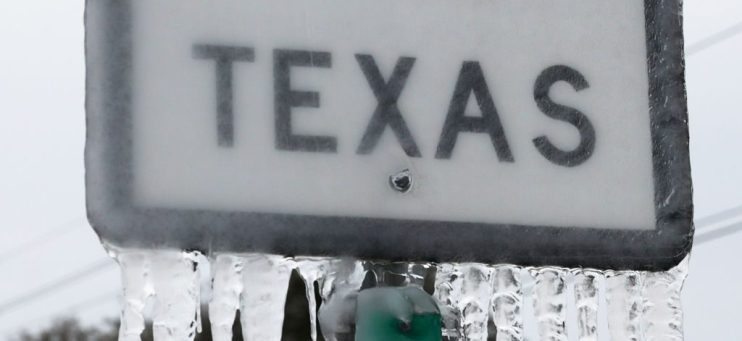Texas blackouts: how a state celebrated for independence went into deep freeze

Temperatures plunged to below freezing plate on Valentine’s Day in Texas, and much of the state was soon covered with four to six inches of powdery snow that many Texans had never seen before. The snow looked so out of place in my parents’ garden just south of Austin, piled on the cacti and agave.
But soon after the excitement of a snow day wore off, Texans were left with the worst energy crisis the state has seen in decades. Unprecedented energy demand as people tried to keep warm paired with the deep freeze caused Texas’ power grid to collapse, leaving millions without power or heat for days as temperatures stayed below freezing.
Independence and self-reliance are two of Texas’ most celebrated characteristics, but they also played a role in the massive energy failure last week. Unlike other U.S. states, Texas has its own grid, existing as an island between the country’s other two major power grids in the east and west.
Long story short, Texas wanted to be able to operate its electrical grid without interference from the federal government and its regulations. But when Texas’ power grid collapsed last week, we were left without a lifeline.
It’s impossible to underscore how unprepared Texans were for this weather. Our windows aren’t double glazed, and most households don’t have hot water bottles or kettles on hand, or even proper winter clothing. I saw people venturing out into the snow wearing oven mitts on their hands because they didn’t own a pair of gloves.
Texans are accustomed to dealing with hurricanes, floods and even tornadoes, but not a deep freeze.
News reports indicate dozens of people died last week, frozen to death in their homes or in fires that began when families tried to keep warm. Nearly 600 carbon monoxide poisonings were reported in the Houston area alone, often in people who tried to keep warm in their cars, and at least two were fatal. We likely won’t know how many Texans perished in the freeze for months.
Another crisis out from the freeze is the lack of safe drinking water. An increase in demand for water paired with damaged pipes resulted in dangerously low water pressure across the state, leading to millions of Texans to be placed under boil water notices if they were lucky to have running water at all.
The pandemic only complicated matters. Texas has been especially hard-hit by coronavirus, and was reporting roughly 11,000 new infections per day before the storm hit, based on a seven-day rolling figure.
When the power grid failed, officials told Texans without power to seek help at the homes of family and friends and in local shelters, sparking worries that the virus could spread from increased contact. The weather also caused vaccination appointments to be pushed back, complicating an already-troubled vaccine rollout.
On Sunday, the temperature reached 21 degrees celsius. and the sun shined bright all day long. The last of the snow has melted. Yet thousands of people still lack reliable energy and clean drinking water, and basic groceries like bread, milk and eggs are still tough to find in shops. People are angry at our state’s lack of preparedness. Local psychiatrists and counsellors have encouraged residents to seek out someone to talk to if they feel overwhelmed. Texas will be dealing with the deep freeze’s ramifications for years to come.